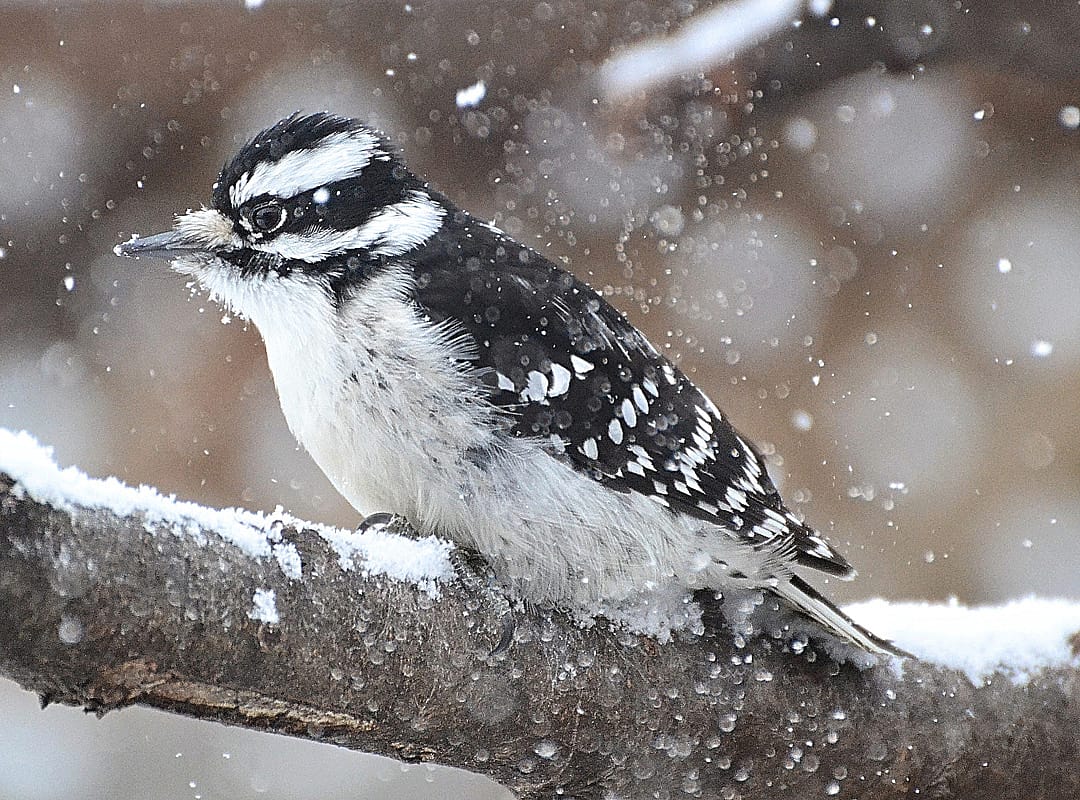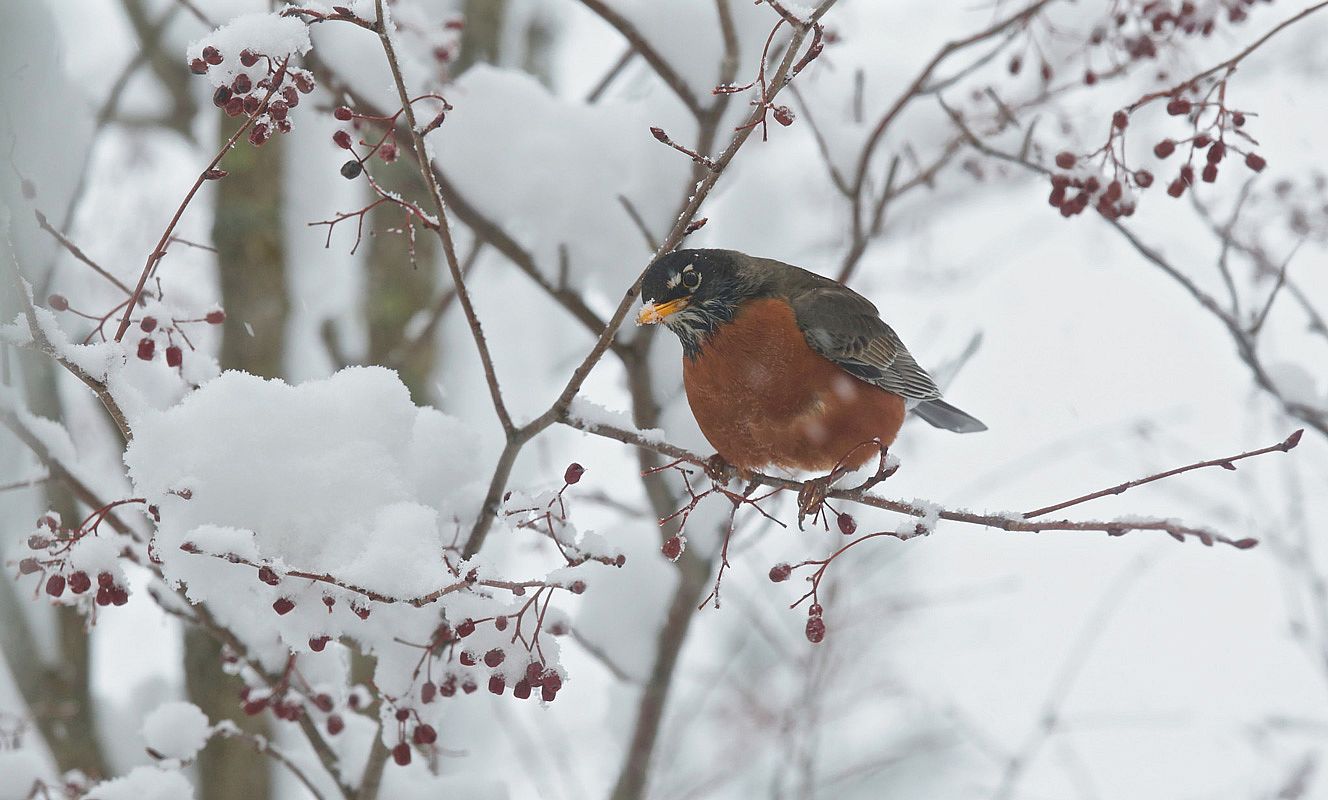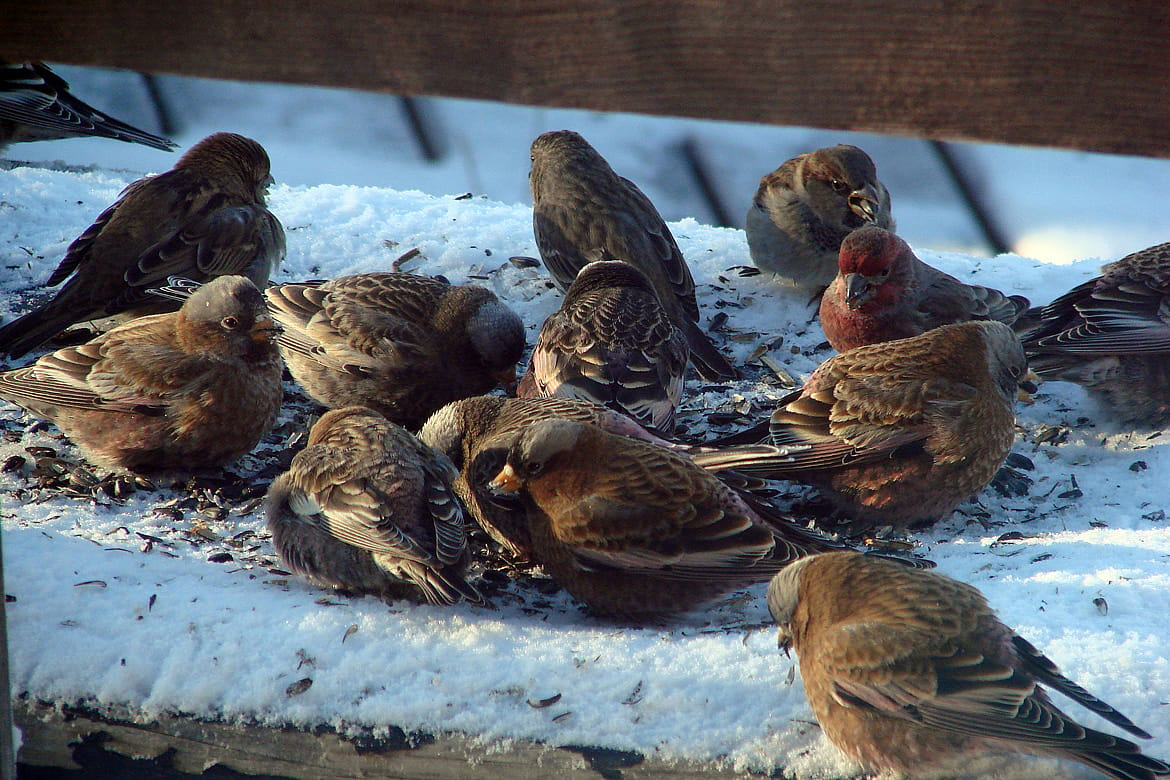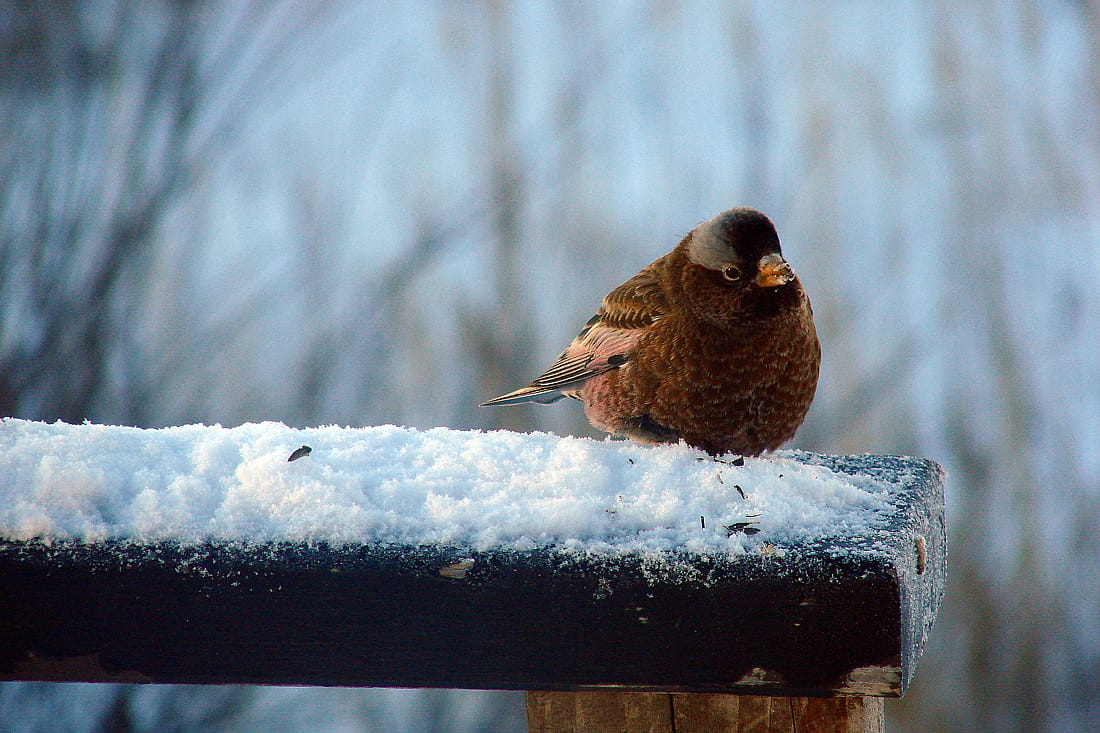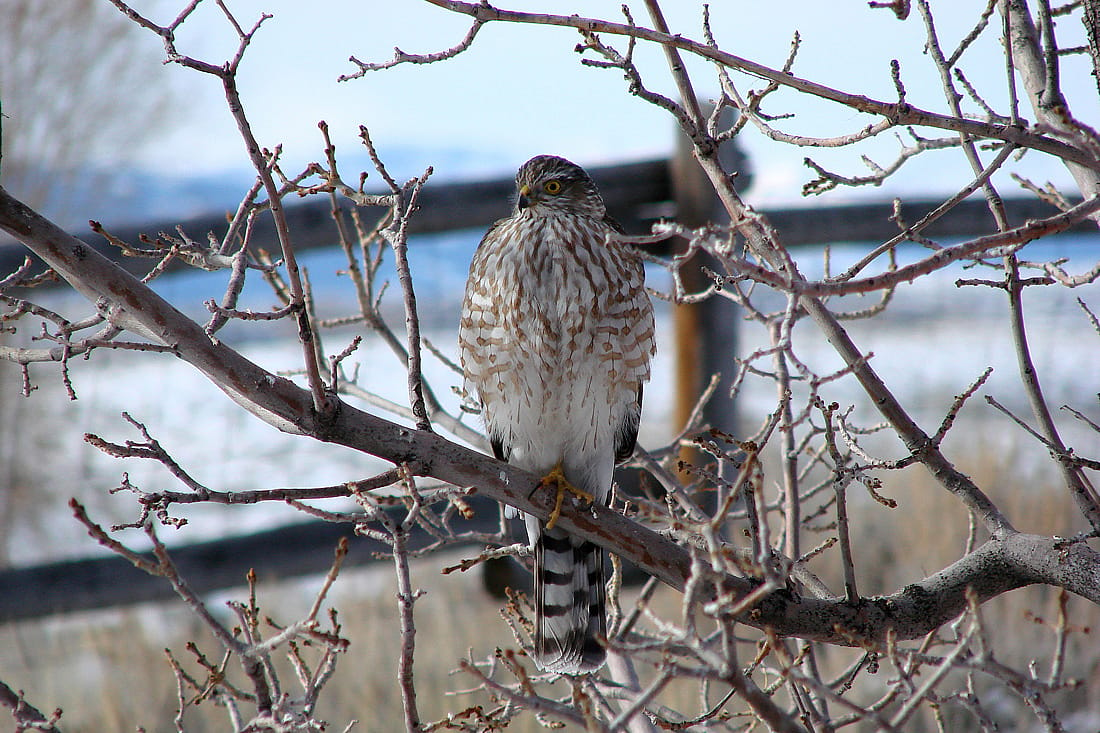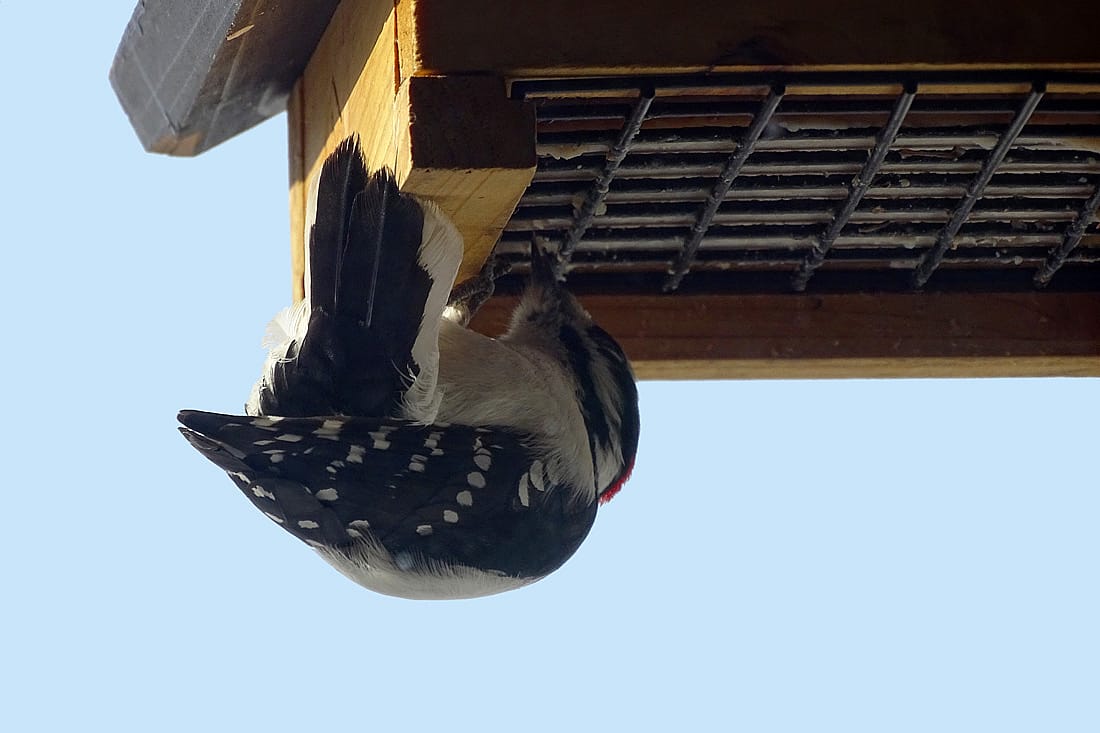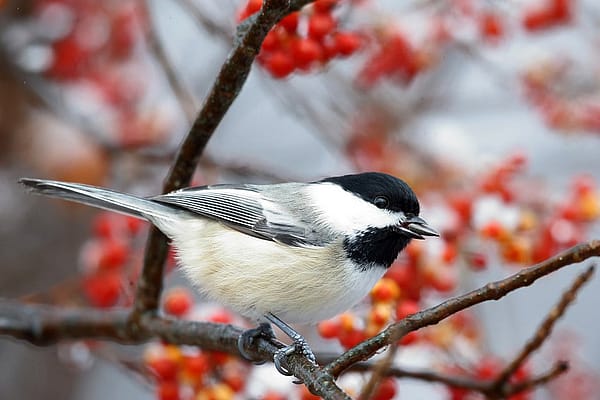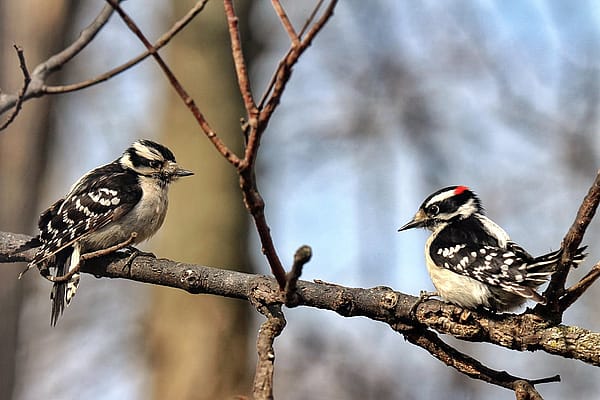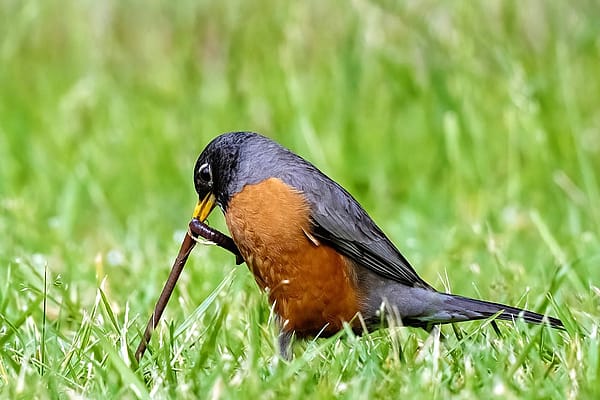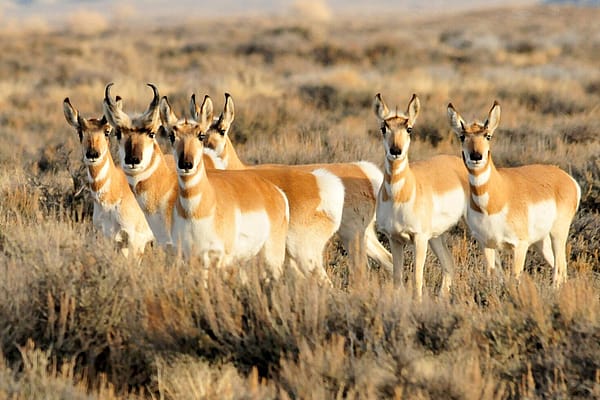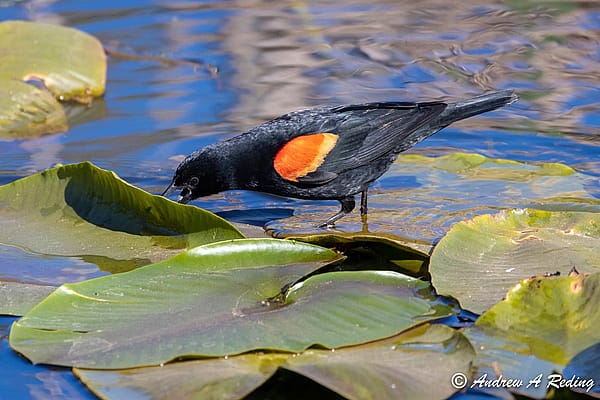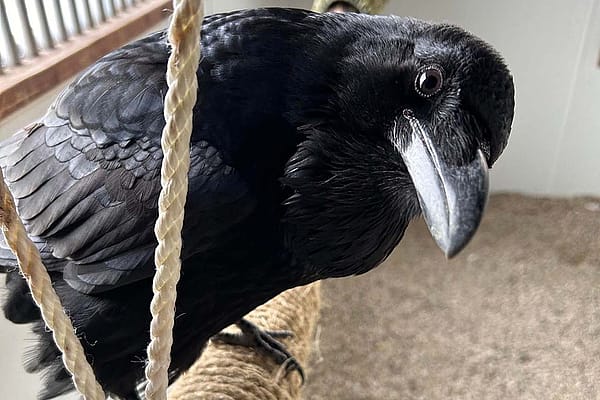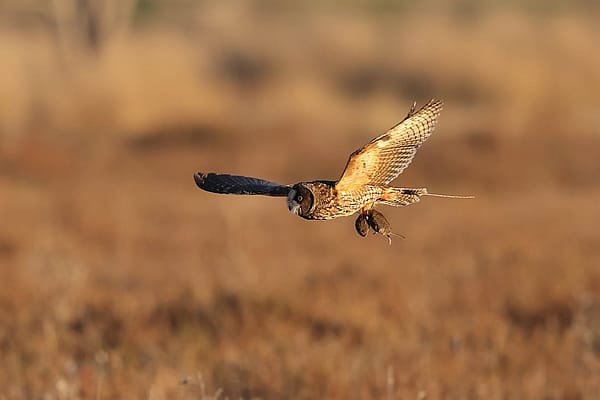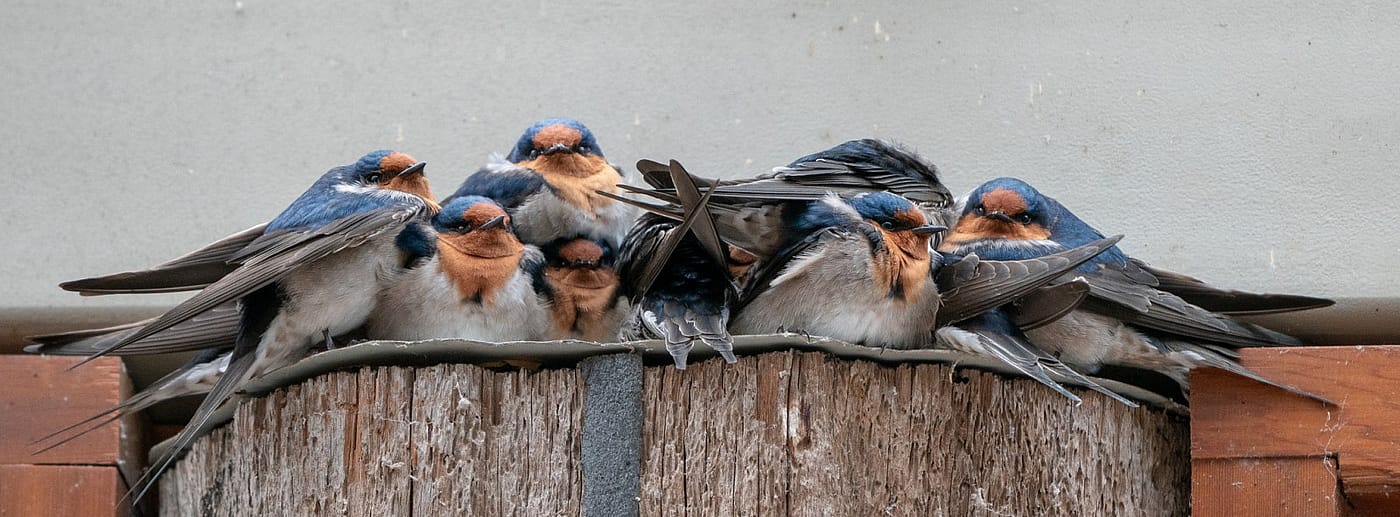
How Birds Survive Cold Temperatures
Here in Wyoming the average December low temperature is 17 degrees Fahrenheit. Add wind and you will have sub-zero wind chill temperatures. Yet many of our birds do not migrate to warmer climates. Others, such as Rough-legged Hawks even migrate into our area in the winter. We think of Robins as being the bird that heralds the arrival of spring, yet it is a myth that all robins migrate south. For some non-migrating species, spending the winter on or near their breeding grounds gives them a better chance to maintain their established territory. With American Kestrels, this may explain why females migrate but some males stay behind. Year-round birds also avoid the hazards of migration.
So how do these birds survive in bitter cold weather?
Shivering
Shivering is one of the techniques birds use to survive cold temperatures. Birds shiver to raise their metabolic rate and generate more body heat as a short term solution to extreme cold.
Birds of a Kind May Flock Together
Many small birds can be seen hanging out in flocks. Huddling together, as with all animals, will help each bird to stay a little warmer. This behavior can also add protection against predators. If one bird notices a predator it will give an alarm, alerting others in the flock that danger has been spotted. A flock in flight may confuse a predator diving into it, therefore increasing the odds of survival for each bird within the flock.
Diet
In the fall and winter months a bird may eat more in order to build up body fat. The fat that birds gain adds to their necessary body insulation. This added fat also adds an additional energy source. Some birds cache (store) food, which ensures a reliable food source for the future. Chickadees eat more than 35% of their body weight every day. It is believed that chickadees not only store huge amounts of seeds, but they also have a good memory as to where it is stored. Chickadees have a large hippocampus area of the brain. This is the part of the brain that is responsible for spatial memory. It has been discovered that this part of a Chickadee’s brain gets even larger in the fall.
Insulation
Both fat and feathers add needed insulation for survival in cold temperatures. Birds will often fluff up their feather in cold weather, thus trapping pockets of warm body heat. In order to increase the efficiency of their feathers, preening becomes important. Preening helps to keep the feathers clean and oiled. This helps birds keep the outer feathers more water resistant while maintaining their warm inner layers. To further help with the bitter cold, many species grow extra feathers as part of a fall molt. This gives them a thicker layer of protection against cold weather.
Feet Warmers
Scales on the legs and feet of some birds help to minimize heat loss. Owls often have feathered legs and feet adding to their warmth. Tucking a foot up into the feathers can also help keep the legs and feet warmer. You may often see a bird standing on one foot. After a time they will switch legs and stand on the other foot. Many birds can also constrict blood flow to their legs and feet, therefore reducing heat loss during cold weather.
The Cooper’s Hawk in the photo below is not only fluffed up, but is also keeping one foot and leg warm by tucking it up under its feathers and close to its body.
Wind Protection
Birds try to stay out of the wind as much as possible. They may simply move to the other side of a tree or tuck back into the denser tree branches of evergreens. Some birds may find a hole in a tree or even a bird house to spend time in. For this reason, old woodpecker holes or natural cavities can be important to the survival of birds in the winter. Birds may also find other places to shelter or spend the night, such as dense shrubbery or openings in buildings. Anything is better than a bare branch – even a tunnel in a snow bank. These cavities and nesting boxes will also help to protect small birds from predators.
Hibernation and Controlled Hypothermia
Many birds have the ability to drop their body temperature to a lower level during periods of inactivity. Red-tailed Hawks may drop their nocturnal body temperature by 5 to 7 degrees F below their daytime temperature. Some small birds such as chickadees and kinglets can drop their body temperature and enter into a controlled hypothermia (sometimes called regulated hypothermia) or even hibernation. Chickadees may use a controlled hypothermia to drop their body temperature as much as 22 degrees Fahrenheit below their daytime body temperature. Others go into a temporary hibernation or torpor state, dropping their body temperature much lower, even close to the outside temperature, in order to save energy. The Common Poorwill is the first known bird that could enter a torpid state in cold weather. The name Poorwill means “the sleeping one.” In fact, the Poorwill not only uses this to enable them to survive cold nights, but can even use this hibernation state, with lowered body temperature, heartbeat, and rate of breathing, for days, weeks, and even months. The drawback to this ability, whether long-term hibernation like the Poorwill, or a short-term controlled hypothermia, is that birds are unable to immediately move out of this state, thus leading to a slower reaction level. This therefore causes a potential danger if predators are around. Despite this, one study suggested that using controlled hypothermia could potentially increase winter survival for small northern birds by 58% over a period 100 days.
What You Can Do to Help
Feeding birds in the winter, although occasionally a debated issue, is supported by many birding organizations and government wildlife agencies. Providing high-energy foods such as sunflower seed, suet, bird cakes, and peanuts can be very important. A heated bird bath, kept clean on a daily basis, will provide valuable drinking water. Birds can eat snow for moisture, but doing this lowers their body temperature, therefore requiring more energy to maintain their normal body heat. If you have nesting boxes, leave them out for the cold months, cleaning them in the late winter before the spring breeding season begins. If you have dead trees with open cavities that can be safely left standing, these can be essential to the survival of a number of birds.
When landscaping, plant bushes and trees that bear fruit. These will help out a number of fruit-eating birds such as robins and cedar waxwings. If adding trees or shrubs to your property, evergreens and coniferous trees are a wise choice, as they provide more shelter to birds during the winter months.
You can also build brush piles to shelter small birds visiting your feeders. This can be as simple as laying a Christmas tree near your feeding area. If you trim trees and bushes, create a brush pile with these cuttings for the winter. Larger branches will help to stabilize your shelter. Leaving pine needles on the branches will add even more protection. You can discard this in the spring or simply add to it over a period of years. Of course depending on where you live you would have to be careful where you create a brush pile, so as not to develop an eyesore for your neighbors. Also, if at all possible create your pile within site of your bird feeders.
You may also enjoy making your own bird suet cakes. The below link will take you to a bird suet recipe offered by the Audubon Society.
https://www.audubon.org/news/make-your-own-suet
Check out 6-more recipes from the Baltimore Bird Club.
https://baltimorebirdclub.org/by/suetrecs.html
For information on choosing the right feeder and seed, check out this article.
https://www.audubon.org/magazine/november-december-2010/audubon-guide-winter-bird-feeding
And remember, those raptors that hang out around your bird feeding area need to eat too. I know it is hard to restrain from chasing them off, but if they can’t find prey they will not survive. We can thank raptors for being great pest controllers. If you have not read my blog, “Sharp-shinned, and Cooper’s Hawks, the Uninvited Guests,” check it out here:
https://centerofthewest.org/2018/04/16/hawks-uninvited-guests/

Photo Credits:
Downy Woodpecker in Snow and Ice by DaPuglet Pugs, Attriution-ShareAlike 2.0 Generic License, https://www.flickr.com/photos/dapuglet/
Robin on snowy branch, smilla4, Attribution-NonCommercial 2.0 Generic license, https://www.flickr.com/photos/smilla4/
Huddled swallows by robdownunder, Attribution-NonCommercial-NoDerivs 2.0 Generic license, https://www.flickr.com/photos/aus_pics/
Teasdale’s feet downloaded from the Draper Museum Raptor Experience’s Facebook page, https://www.facebook.com/DraperMuseumRaptorExperience/
Rufous Treecreeper in Tree Cavity by Jean and Fred Hort, Attribution 2.0 Generic license, https://www.flickr.com/photos/jean_hort/
All other photos by author, Attribution-NoDerivatives License, https://www.flickr.com/photos/157982666@N07/
Written By
Anne Hay
Anne Hay has a Bachelor's degree in Elementary Education and a Master's in Computers in Education. She spent most of her working years teaching third grade at Livingston School in Cody, Wyoming. After retiring she began doing a variety of volunteer work for the Buffalo Bill Center of the West’s Draper Natural History Museum. Anne loves nature and has a concern for the environment. She believes that educating the public, so that they will have a better understanding and appreciation for the natural world, is very important. Because of this belief, volunteering at the Center is a perfect fit. She spends time in the Draper Lab, observing eagle nests for Dr. Charles Preston’s long-term research project on nesting golden eagles, writing observation reports of raptor sightings in the Bighorn Basin, and working with the Draper Museum Raptor Experience. Anne states that, “Having a bird on my glove, is one of my all time favorite things in life.”
